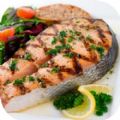|
What comes to mind when you hear the word "salad"? An uninspired "sad desk salad," a term that has come to be synonymous with the overworked, bland office worker? Perhaps it's a side salad of wilting romaine and maybe a tomato if you're lucky. Maybe you see a McDonald's salad with more calories than a Big Mac. When people hear the word "diet," chances are their minds immediately jump to a boring salad, which is likely why the word has been associated with more negative associations than positive. Sadly, while vegetables are low in calories and filled with necessary nutrients, the Centers for Disease Control and Prevention reports that 90 percent of Americans don't meet the recommended daily amount of vegetables. If you're doing it right, though, "salad" should mean a big bowl of green goodness topped with the nutrients you need to power through any workout, work meeting or evening walk—a secret weapon along the journey to weight loss. If you fall in that 90 percent group, it's time to make that change to the "right" way. Unfortunately, it's become common for folks to sabotage their salad by adding too many Creating a salad that is both nutritious and filling isn't rocket science, but there is a strategic way to go about the process. Before you pile on everything you can find at the salad bar or sink into an unnecessarily boring salad, discover this five-step formula for building a well-balanced and satisfying meal your belly will thank you for. Step 1: Choose your baseStart by choosing your greens such as kale, romaine, spinach, arugula or a lettuce mix. You can also opt for shredded cabbage (purple, green, or a mix of both), but skip iceberg if possible, as it adds more crunch than nutrients. Leafy green vegetables are packed with antioxidants, vitamins A and C, phytonutrients and fiber. The darker the color the more nutrients the greens contain. To get the most out of your base, rotate between different types of greens. Whichever green you choose, they are an easy way to fill your plate without too many calories. They're not a meal on their own, though, so it's important to build on them. Step 2: Top with more vegetablesGenerally, one half-cup of cut vegetables is the equivalent of 25 calories. Once you have your base, choose three or four vegetables to add to the top. As you wander through the produce aisle, keep in mind that the various colors of vegetables indicate different nutrients the vegetable contains. That's why you want your salad to a rainbow of colors (or as close as you can get Step 3: Add your proteinVegetables on their own won't fill you up and get you through to your next meal. To ensure you're not running to the snack pantry or vending machine 30 minutes after you finish that last bite, you need to add a lean protein to the mix. Options include anything from shrimp or grilled chicken or fish to a hard-boiled egg or lean beef. Make it vegetarian with tofu, lentils or beans if that's your preference or you're testing out the Meatless Monday trend. Whatever you choose, it should be about three ounces of meat, poultry or fish or three-quarter cup of beans or lentils. Step 4: Choose toppings wiselyNow comes the tricky part for most people. You've already got a good number of goodies on your plate, but all those extra toppings at the salad bar look so good that you want them all. By mindlessly throwing
Step 5: Dress it upAnother easy way to sabotage your salad is to drown it in dressing—a bad habit which most restaurants are especially guilty of doing. Creamy dressings like Ranch and Caesar can have around 200 calories or more per two tablespoon portion. And if you think olive oil and vinegar is better, listen up: Every tablespoon of oil (olive, safflower, avocado) contains 120 calories and many people use three to four tablespoons of oil on their salad. When it comes to dressings, take a step back and examine all your options. If you are at home, check which vinaigrettes you have on hand and aim for a two-tablespoon portion. You can also stock up on better-for-you dressings that have a modest amount of calories or even make your own. If you're out at a salad bar, look for It's time for salads to get a new reputation. Gone are the days of limp and boring greens, and say goodbye to calorie-bombs masquerading as the "healthy" option on restaurant menus—with this formula, you'll be able to create a filling, delicious salad that you look forward to eating any meal of the day. |



.jpg)
